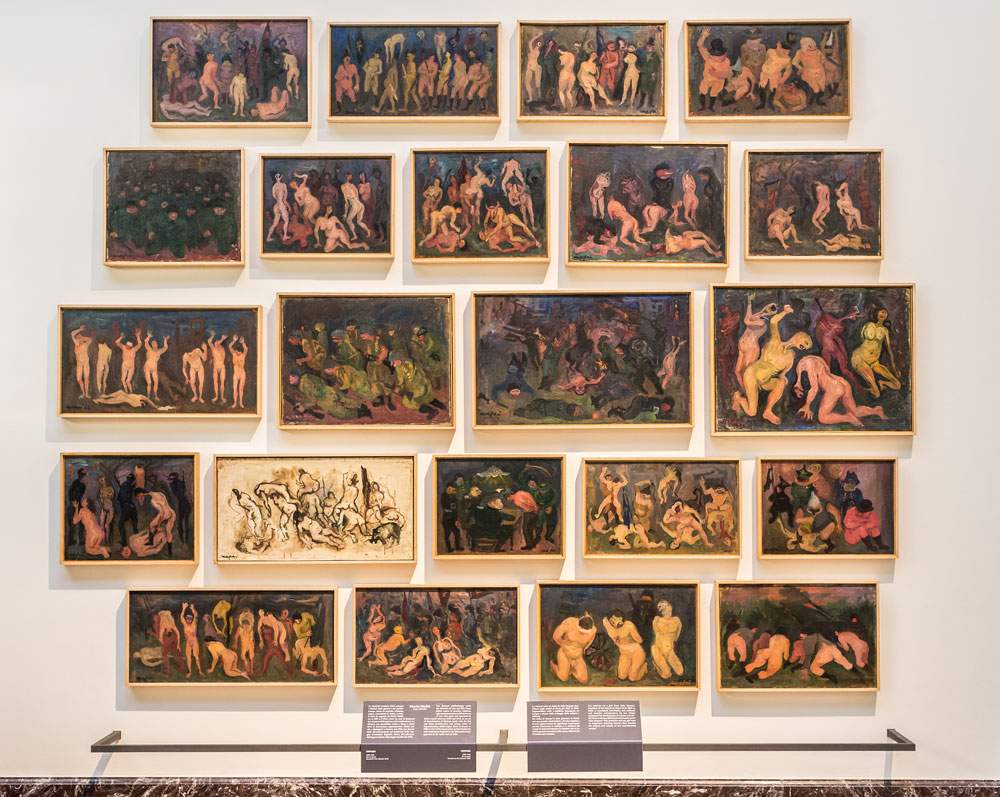Mafai's tablets of massacres and horrors on display at Brera Art Gallery
The Pinacoteca di Brera is now showing Le Fantasie di Mario Mafai, twenty-two paintings donated to the Milanese museum venue in 2018 by the then president of the Amici di Brera, Aldo Bassetti. An entire wall of room 18 has been dedicated to this collection, thanks to the project curated by Alessandra Quarto and Marco Carminati. From March 29 it will also become a documentary visible on the Brera Plus + platform.
While waiting to transfer the Fantasies to Palazzo Citterio, future Brera Modern, as they will be part of the modern art collection, the Pinacoteca displayed the twenty-two paintings as a tribute to the donor himself. The story of the tablets starts far back and is linked to a tragic episode in Bassetti’s life, when he was just fourteen years old: the massacre at the Hotel Meina on Lake Maggiore in 1943. Victims of a German roundup, carried out all along the Novara coast of Lake Maggiore, sixteen Jewish guests of the Hotel Meina in Meina were first identified and held for a few days in a room and then, on two successive nights (September 22 and 23, 1943), killed and thrown with ballasts into the lake. Among the victims was Lotte Froehlich Mazzucchelli, the 38-year-old aunt of Aldo Bassetti, who was called upon to identify the corpse and, as he himself recalls, it was “an experience that completely changed my moral, political and social sensibility. That’s when Mafai became a symbol of my life.”
In memory of those years, Aldo Bassetti donated to the Pinacoteca di Brera Mario Mafai’s cycle of twenty-two small paintings, entitled Le Fantasie: tablets of massacres and horrors, of cries and guilty silences, painted with hallucinatory colors and a strong expressionist matrix by the artist between 1939 and 1944. An act of denunciation of the massacres of war and Nazi-Fascism. Mafai began painting them during his stay in Genoa, where he had moved from Rome with his family in 1939, for fear of discrimination against his wife Antonietta Raphaël, who was Jewish. In 1957 the paintings were purchased by Giovanni Pirelli, the industrialist’s eldest son, who, however, chose to forgo a destiny in the family business to become first a partisan commander and then a writer. “The fact that this collection had been bought by Giovanni Pirelli, whom I knew, also a bit of an exception because he was the son of Pirelli, a fascist family, while Giovanni was a true, profound, sincere anti-fascist, gave me great consolation,” Bassetti says.
“My purchase and my gift,” the collector concludes, “have a strictly political meaning. These works represent a man, Mario Mafai, whose priority as an artist had been to depict the sadness and infamy of the concentration camps. Here is my thought-an anti-fascist thought. I wish that we know what happened in history so that it will be remembered forever.”
In 2021, through a series of events, the Pinacoteca di Brera will pay tribute to the Brera donors who helped enrich the museum’s collections.
Pictured, Le Fantasie by Mario Mafai in room 18 of the Brera Art Gallery.
 |
| Mafai's tablets of massacres and horrors on display at Brera Art Gallery |
Warning: the translation into English of the original Italian article was created using automatic tools. We undertake to review all articles, but we do not guarantee the total absence of inaccuracies in the translation due to the program. You can find the original by clicking on the ITA button. If you find any mistake,please contact us.





























